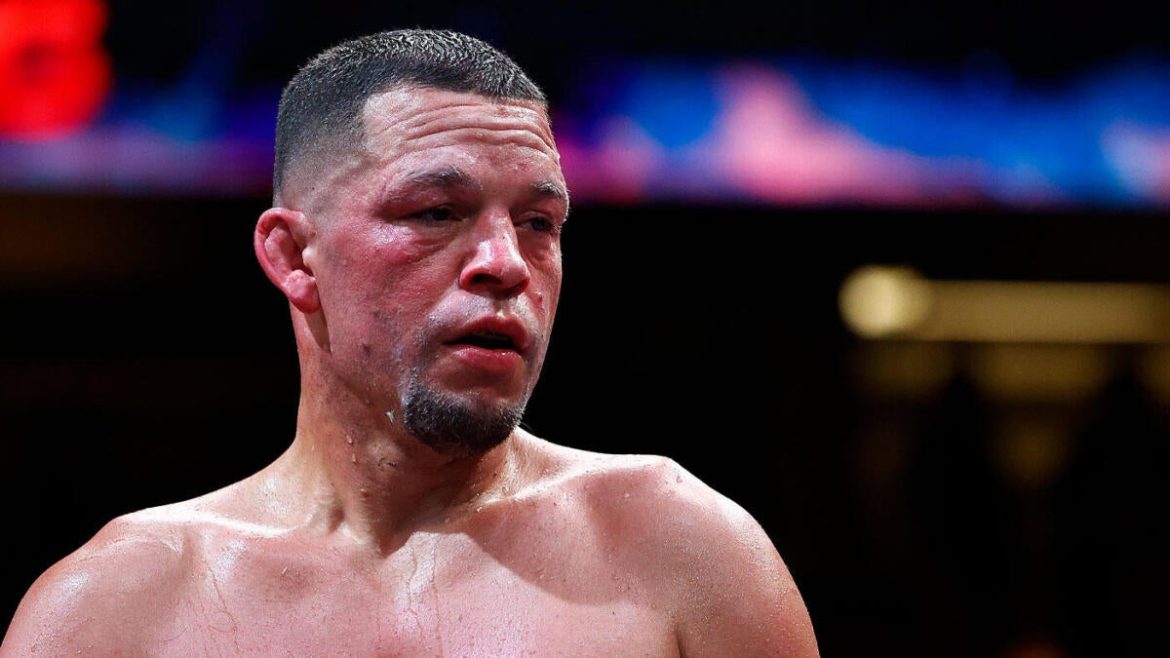The explosive brawl involving Nate Diaz during the filming of a Russian reality TV show alongside Jon Jones has become a significant moment in MMA’s off-ring drama, highlighting shifts in fighter dynamics, cultural clashes, and the challenges of blending combat sports with entertainment production. This incident not only interrupted a promising new project but also revealed the intense competitiveness and volatility underlying even scripted reality formats.
Background and Context of the Disrupted Reality Show
Jon Jones, the current UFC heavyweight champion, and Nate Diaz, a longtime fan-favorite UFC veteran known for his toughness and confrontational style, were set to star as opposing coaches in the second season of a Russian fighting-based reality series akin to *The Ultimate Fighter*. The show was being filmed in Thailand and aimed to capture the competitive spirit of MMA athletes under intense circumstances while engaging a global audience.
The production’s appeal hinged largely on the star power of Jones and Diaz, two figures with contrasting personalities but shared reputations for intensity and conflict. Originally heralded as a high-profile clash, the reality show promised not only to entertain but also to deepen fan engagement by leveraging the personalities and rivalries outside of the octagon.
The Brawl: Events and Escalation
The turning point occurred early in shooting when a mass brawl erupted between Nate Diaz’s team, which included Jake Shields, and other fighters competing on the show. Video footage showed a chaotic melee, which reportedly escalated rapidly after a verbal confrontation led to physical violence. Jake Shields described the situation as intense and unplanned, with fighters from competing camps clashing violently.
Jon Jones characterized the brawl as serious from the outset, noting that it became clear they had to replace Diaz following the incident. Diaz, disillusioned with the intense conflict and the breakdown in security and control, decided to exit the show altogether, effectively pulling out of a co-starring role alongside Jones.
Adding to the drama, reports indicated that after the brawl, Diaz’s team was pursued by some of the Russian fighters on motorcycles for days, underscoring how tensions extended beyond the set and raised safety concerns. The episode highlighted the unpredictable nature of mixing fighters with strong rivalries and cultural differences in a high-stakes environment.
Implications for Fighters and the Show
The brawl’s fallout has several layers of impact:
– For Nate Diaz: Exiting the show added to his reputation for being embroiled in altercations outside official matches. While Diaz is preparing for a 2025 UFC comeback aimed at a championship run, this incident underlined his no-nonsense fighter persona, showing how real-world skirmishes and emotional intensity often follow him outside the cage.
– For Jon Jones: Jones had to assume a quasi-referee role during the chaos and commented on the seriousness of the conflict. His calm mediation contrasted with the volatility around him, though his planned showdown with Diaz for the reality series was scrapped, delaying a highly anticipated public clash.
– For the Production: The violent altercation essentially tanked the project’s potential. With Diaz gone and the tensions unresolved, the show faced challenges in continuing without losing credibility and control. Such incidents raise questions about casting decisions, security protocols, and how combat sports entertainment can safely manage personalities with volatile histories.
– For MMA Fandom and Culture: Fans and commentators have reacted with a mixture of shock and fascination. While some lamented the lost opportunity for a high-profile narrative between Jones and Diaz, others viewed the brawl as an extension of the raw, unmanaged aggression that defines parts of MMA culture. The incident also spurred discussions about the boundaries between real-life conflict and staged entertainment.
Underlying Factors and Broader Insights
Several underlying factors contributed to the escalation and fallout:
– Cultural Clash and Environment: Filming in Thailand and involving fighters from various backgrounds likely intensified misunderstandings and tensions. Different cultural attitudes toward confrontation, honor, and conflict resolution may have played a role in how the situation spiraled.
– Fighter Personalities and Histories: Both Diaz and Jones, as well as others like Shields, carry reputations for toughness and confrontational styles. Past enmities and unresolved grudges, such as the Diaz brothers’ history in Strikeforce brawls, fed into the volatility.
– Reality Show Pressure Cooker: Reality TV’s design to provoke drama can clash with real-world aggression. Fighters, already conditioned for conflict, may find the artificial environment claustrophobic or manipulative, leading to genuine explosions of anger.
– Security and Production Oversight: The incident exposed possible lapses in managing fighter interactions and securing the filming location, contributing to the melee’s severity and aftermath.
Conclusion: A Cautionary Tale for MMA Entertainment Ventures
The chaotic brawl on the Russian reality TV show set involving Nate Diaz and Jon Jones serves as a vivid reminder of the potent mix of personalities, cultural complexities, and competitive pressures in MMA. While the prospect of blending fight sports with dramatic entertainment is alluring, this event highlights significant risks when the unpredictable nature of fighters’ tempers meets reality television’s demand for conflict.
Ultimately, this incident spoiled what might have been an exciting new platform to showcase MMA talent and personalities in a fresh context. It also reinforced Nate Diaz’s image as a fighter whose presence commands respect but can stir disruption, and underscored Jon Jones’s role as a composed figure amid chaos.
For the MMA world, the episode offers lessons about respecting the genuine intensity of fighters beyond scripted scenarios, the necessity of rigorous safety measures, and the challenges inherent in balancing authenticity with entertainment. The fallout from this brawl will likely influence future productions involving fighters and shape fan expectations around how off-ring drama is managed and portrayed.





